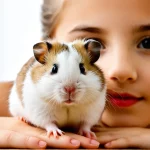Notable Physical Characteristics Unique to UK Cats
UK cats are renowned for several unusual physical traits that set them apart. Among the most remarkable are the rare fur patterns found in UK cats. For instance, some breeds display distinctive tortoiseshell or spotted coats that are less common elsewhere. These fur patterns contribute to their unique charm and help identify regional lineage.
In addition to coat colors, the eye and ear features of British cats are particularly distinctive. Many UK cats, like the British Shorthair, have large, round eyes in striking shades of copper or deep gold. Their ears tend to be smaller and rounded at the tips, differing from the sharper points typical in other cats.
Topic to read : What Are the Unique Characteristics That Make Cats the Ideal Indoor Pets?
Regionally, coat texture and length vary noticeably. While Scottish Folds often have plush, dense fur, other UK breeds might exhibit a softer or silkier coat. Such physical differences are not just aesthetic but often indicate specific adaptations or breeding selections characteristic of particular areas. Understanding these traits allows cat enthusiasts to appreciate the profound diversity and heritage among UK cats.
Surprising Behaviours and Quirky Habits Observed in UK Cats
British cats display some truly unique behaviours that reflect their environment and character. One noticeable trait is their preference for quirky play routines. Many UK cats favour interactive toys that mimic local wildlife, such as feathery wands or small plush birds. This play pattern not only satisfies their hunting instinct but also highlights their adaptability to urban and rural UK settings.
Also read : Why Do Cats in the UK Fascinate Us So Much?
Another intriguing aspect is their vocalisations. UK cats often produce distinctive meow sounds that differ from those commonly heard elsewhere. These vocalisations can range from soft trills to rapid chirps, which owners interpret as expressions of contentment or requests for attention. Such vocal habits may be influenced by the British domestic environment, where quieter, more nuanced communication is common.
Socially, UK cats often demonstrate unique hunting and interaction habits. Their stalking technique tends to be deliberate and patient, shaped by the typical prey found in the UK, such as small rodents and birds. Additionally, British cats often show a reserved yet affectionate social style, blending independence with occasional cuddles—a noteworthy British cat personality trait that endears them to owners across the country.
Breed-Specific Oddities Found in UK Cats
Brilliant quirks that make British felines unique
The British Shorthair is renowned for its dense coat and distinctive round face, but beneath its plush exterior lie breed-specific quirks rarely seen elsewhere. This breed often displays a calm, easygoing temperament combined with a slow maturity rate. Unlike many other cats, the British Shorthair’s cheeks remain full and rounded well into adulthood, making their expression particularly charming.
Turning to the Scottish Fold, a hallmark of UK cat breed quirks lies in its exceptional ear structure. The iconic folded ears are caused by a natural dominant gene mutation affecting the cartilage. This trait is exclusive to this regional breed and gives the cat an owl-like appearance that easily captivates enthusiasts. However, potential owners should be aware of the health considerations linked to this trait, including joint and cartilage issues.
Beyond these well-known breeds, the UK boasts lesser-known native cats with remarkable traits. For example, the Cymric, essentially a longhaired Manx, possesses a tailless or short-tailed body, another genetic oddity unique to British origins. By exploring these breed-specific UK cat traits, cat lovers gain insight into the fascinating genetic diversity present in British felines, making them a compelling choice for enthusiasts.
Regional Adaptations and Environmental Influences
Cats in the UK exhibit distinct adaptations shaped by regional climates and environments. In colder parts of the UK, cats often develop thicker, denser fur to protect against damp and chilly conditions. This adaptation is crucial for maintaining body heat during harsh winters and fluctuating weather. Conversely, cats in milder southern regions may have shorter coats, reflecting the less severe climate.
Behaviourally, UK cats adapt to their surroundings. Rural cats tend to display more independent hunting instincts, taking advantage of the countryside’s abundant wildlife. This contrasts with urban UK cats, which often adapt to smaller living spaces and may become more sociable, adjusting to frequent human interaction and noise. Such behavioural flexibility highlights the significant impact of environment on UK cats.
Integration with local wildlife also influences feline adaptations in the UK. Cats coexist with native species like birds and small mammals, often shaping their hunting strategies and territorial behaviours. This interaction emphasizes how environment impacts UK cats not only physically but ecologically, creating unique regional characteristics. Understanding these factors helps owners appreciate the tailored care needs their cats might have depending on where they live in the UK.

